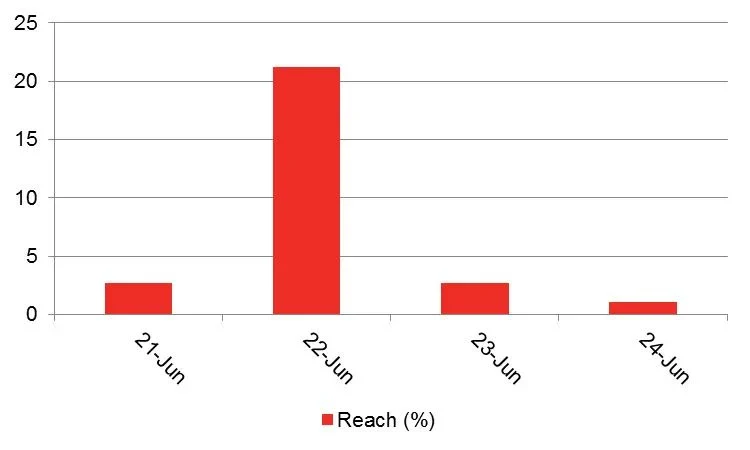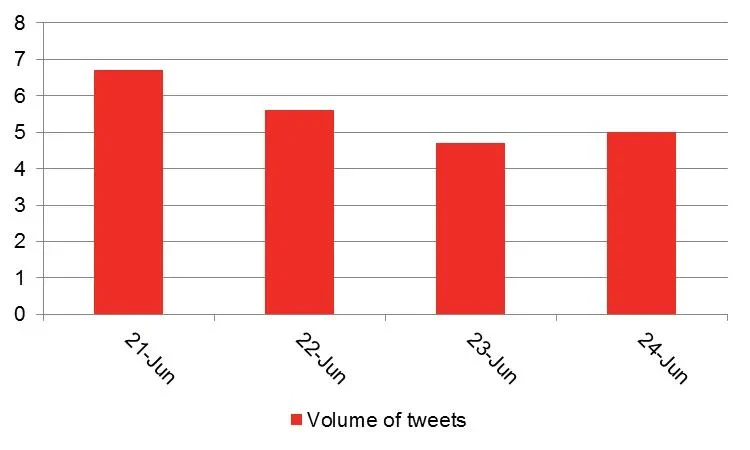On 22 June, The Sun reported that a senior British Airways pilot had typed out the message “show us ur t**s” on his cockpit computer. The newspaper also reported how the same pilot sent flirtatious text messages to his lover whilst in mid-flight, despite her urging him to focus on flying the plane.
Pilot Graeme Hindley simply responded to her pleas by saying that he was “not distractable”.
While this seems like a mild ‘kiss and tell’ story, YouGov’s social media analysis tool offers crucial insight into the impact on BA’s brand on Twitter and on the importance of influential tweeters who have a large number of followers.
Using YouGov’s social media panel, we can measure the percentage of the Twitter population that were exposed to a mention of British Airway’s on their twitter feeds. If we look at the data on 22 June, we can see that 21.3% of the Twitter population were exposed to a tweet about the airline, compared to just 2.7% the previous day.

It is easy to assume that an increase in the amount of people that heard about BA on this day also means that there was an increase in the amount of tweets that were heard about the airline. However, this is not necessarily the case.
If we look at the volume of tweets about the airline over the same period, we can see that there isn’t a spike on 22 June. How, therefore, can we explain the increase in the amount of users that heard about British Airways without an accompanying increase in the amount of tweets that were heard?

This pattern indicates that an influential tweeter had a significant role to play, with a single tweet (low volume) reaching a high number of users (high reach).
By looking at the verbatim tweets we can see that The Sun’s Twitter account (353,000 followers) was primarily responsible for increasing the airline’s reach on 22 June.
By verifying the reach of BA in the context of the volume of tweets heard about the airline, SoMA allows brand managers to understand exactly what is happening on social networking sites.
While at first this story seems nothing more than cheap gossip, our analysis indicates that it had a significant impact on British Airways’ twitter activity for that day. Furthermore, by comparing volume with reach, SoMA was able to identify that while the amount of people that tweeted about BA was low, a very high number were in fact exposed to the story. This can make brand managers aware of a social media PR crisis (what users are hearing), even when the initial evidence (what users are saying) seems to suggest that one does not exist.






